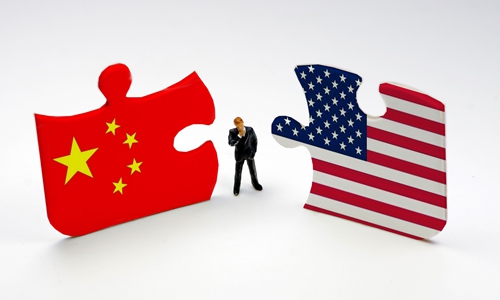Bridging wealth gap tests Chinese, US competitiveness

Photo: VCG
The year 2020 will witness China fully wiping out extreme poverty. Since reform and opening-up in the past over 40 years, China has lifted more than 800 million people out of poverty, representing about 70 percent of global poverty alleviation. It is an accomplishment to which no one can ignore.
On the last day of 2019, the Daily Mail published an article noting that statistics from the World Bank and World Poverty Clock show "extreme poverty in China has almost been entirely eradicated." It also pointed out while global rates of extreme poverty have decreased since 2010, inequality has increased - the richest people are "holding a larger portion of the global pie."
Eradicating poverty is a challenge to the world, including the US. On the website of the White House, an article entitled "President [Donald] Trump's Policies Continue to Benefit All Americans, Especially the Disadvantaged" claimed that the US poverty rate "fell to its lowest level since 2001." Obviously it is one of the achievements for current administration to boast about.
The issue of poverty in the US has not been at the same level as that in developing countries, yet the US is also confronting severe test in fighting against poverty. A 2018 UN report said that 40 million people in the US live in poverty, among whom 18.5 million live in extreme poverty. The report said the US "already leads the developed world in income and wealth inequality, and it is now moving full steam ahead to make itself even more unequal."
That being said, future competition between Beijing and Washington is not only about economics, trade or high technology, but more significantly, about which side can help the poor lead prosperous lives and realize equal and sustainable economic development.
What China ponders today is how to maintain the achievement of extreme poverty elimination and reduce relative poverty and inequality in the future. Chinese scholars and policymakers are discussing the integration of poverty alleviation work with education, medical care and public services, so as to reach a balanced development between urban and rural areas. Thanks to the system of socialism with Chinese characteristics, poverty reduction has been carried out energetically and it is believed future relevant works will be implemented proactively.
The US, on the other hand, has been trying to adjust its industrial structure by launching a trade war. Given its intensifying trade frictions with other countries, the tax burden has fallen hard on lower-and middle-income households.
Not to mention the increasingly dramatic political infighting in the country, which has made it arduous for any policy to be carried out. Quite a few analysts thus believe that the US will be caught in social division for a long time due to the widening wealth gap.
Which country can stand the test of the trade war will to a large extent depend on which side can realize balanced and sustainable development. This is not only China's task and challenge, but also that of the US.